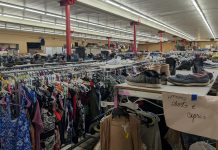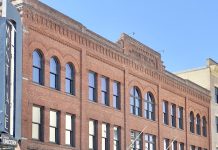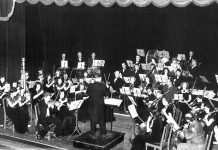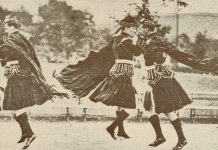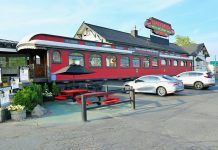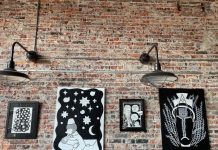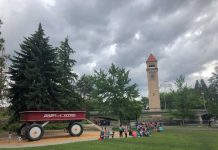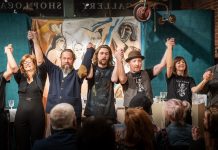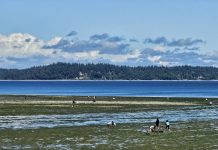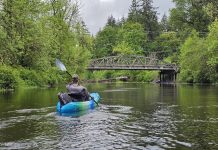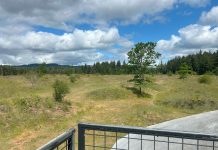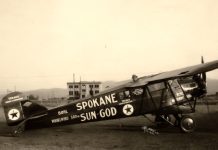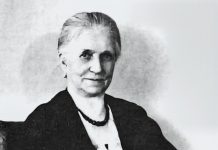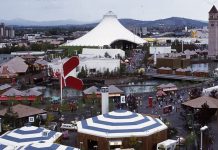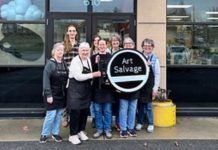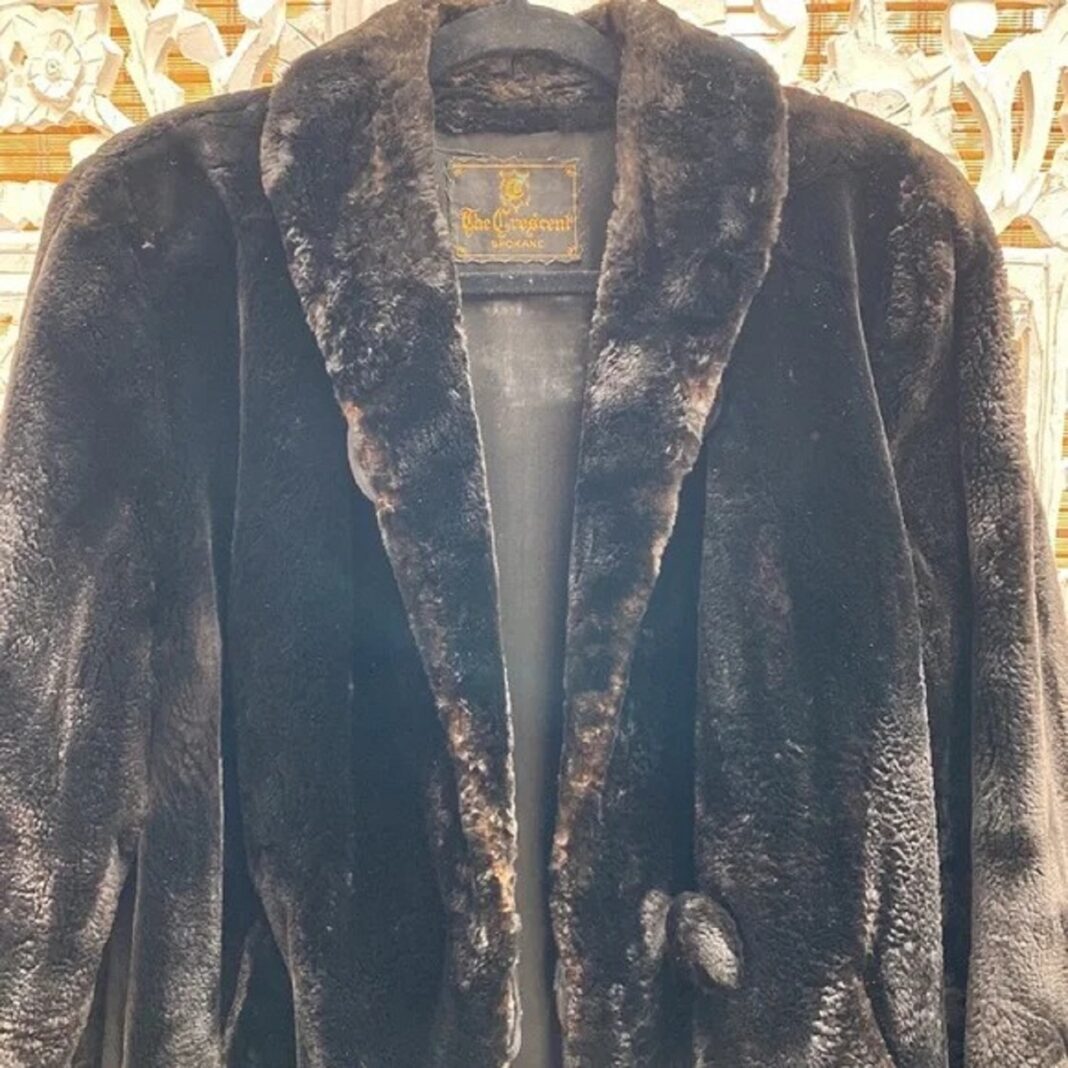While recently shopping at an abandoned home’s estate sale, I came across a beautiful vintage fur coat with a label reading, “The Crescent Spokane.” Unsure of the exact fiber content, we think it’s either seal fur or a lovely sheared beaver coat. Of course, I bought the coat, as I was unaware that Spokane had its very own historic fashion brand.
The Crescent was a chain of department stores founded and based in Spokane. Formerly Spokane Dry Goods Company, The Crescent Spokane, was a retail-industry department store founded on August 5, 1889, by Robert B. Paterson and James M. Comstock and was Spokane’s leading department store for many decades. “James Comstock, who co-founded The Crescent with Robert Paterson, was my grandfather’s great uncle. Grandpa came from Iowa to Spokane as a young man to work for [Robert Paterson] at the Spokane Dry Goods Company, as it was then called,” said Andrea Matters.
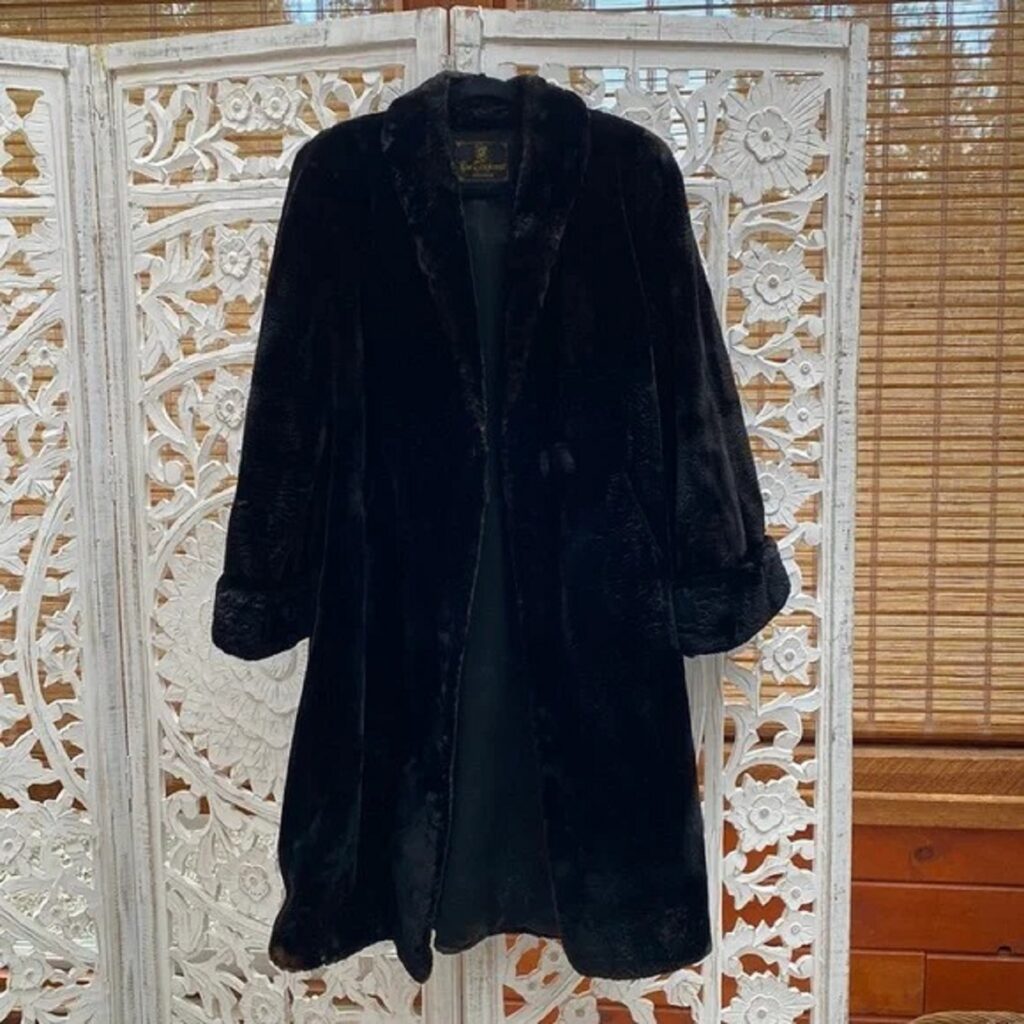
At peak production, The Crescent operated a total of seven department stores in Washington and Oregon, with three stores in Spokane. Locals of Spokane remember absolutely loving this shop as they chimed in with stories and memories surrounding the brand’s history. Many Spokanites and Spokane historical researchers are descendants of the original owners, mentioning their roles working for the store or modeling for them in their teenage years.
The original Crescent was located on West Riverside Avenue, next to the Spokesman-Review Building. Their first day in business was on August 5, 1889, the day after the Great Fire. As the Great Fire destroyed most of downtown Spokane, The Crescent was the city’s only remaining dry-goods store. Their entire stock sold out entirely within their first full day of business. The owners wanted to support Spokane’s post-fire effort, so they did not raise prices or take advantage of the disaster. Their tradition was to “be fair to everyone,” so costs were kept at regular pricing — with no price-gouging due to high demand.
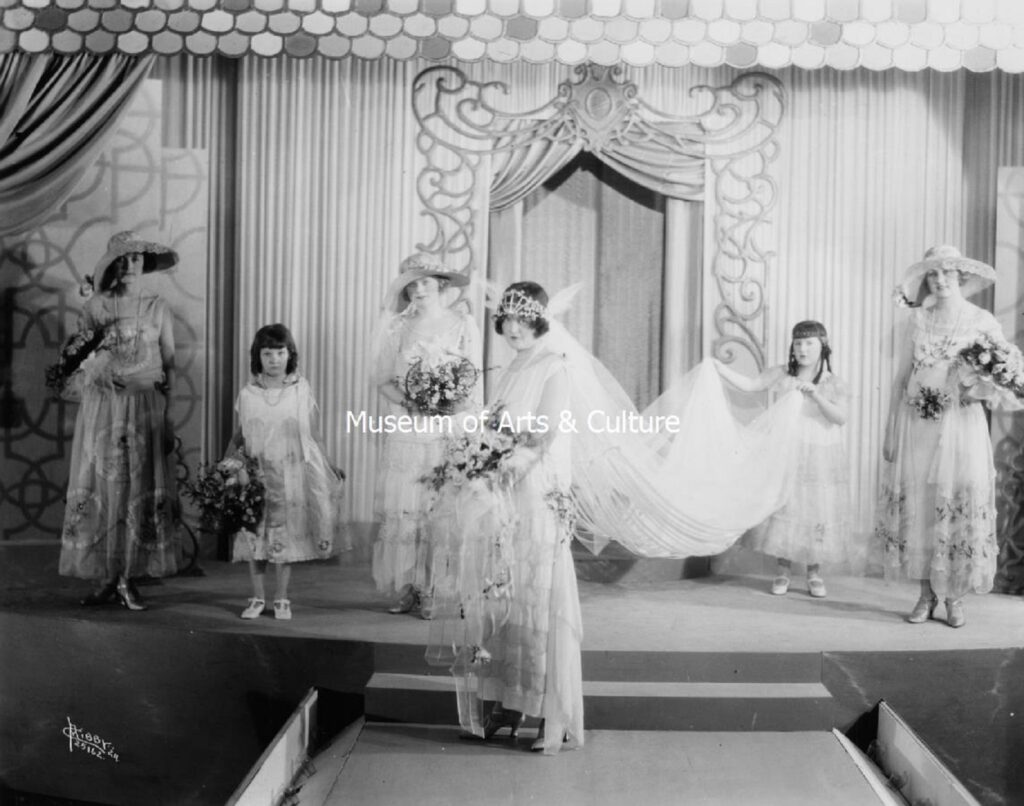
The Crescent was a higher-end department store, similar to Nordstrom of today. “I love Nordstrom, but The Crescent was even better. In the fifties and sixties, you could go into the store, make your purchases, and have them all delivered that same afternoon. You didn’t have to carry a single bag home,” Shanna Peterson, an avid past-Crescent shopper, stated.
Over 132 years ago, the original downtown Spokane headquarters of The Crescent was located at 707 W. Main Avenue, on the southeast corner of Main and Wall Street. The Crescent building was designed by notable historic Spokane architect Loren L. Rand. Construction began in 1917, working through to 1919. Initially, the building was five stories high, later expanding to seven. In 1949, The Crescent acquired the Alexander Building, that extended half a block to the south. The building’s final expansion occurred in 1973 to include the remaining part of the clock’s NW corner.
Locals remember that The Crescent used to have the best Christmas window displays back when the downtown area was bustling. Though the original building doesn’t stand today, “It was East of the Spokesman’s Building. The newer curved building that follows the curve of Riverside was designed as a tribute to the crescent-shaped building there previously,” said Larry Thomas. This area is now known as the “Crescent Court,” which houses various retail stores, shops and offices.
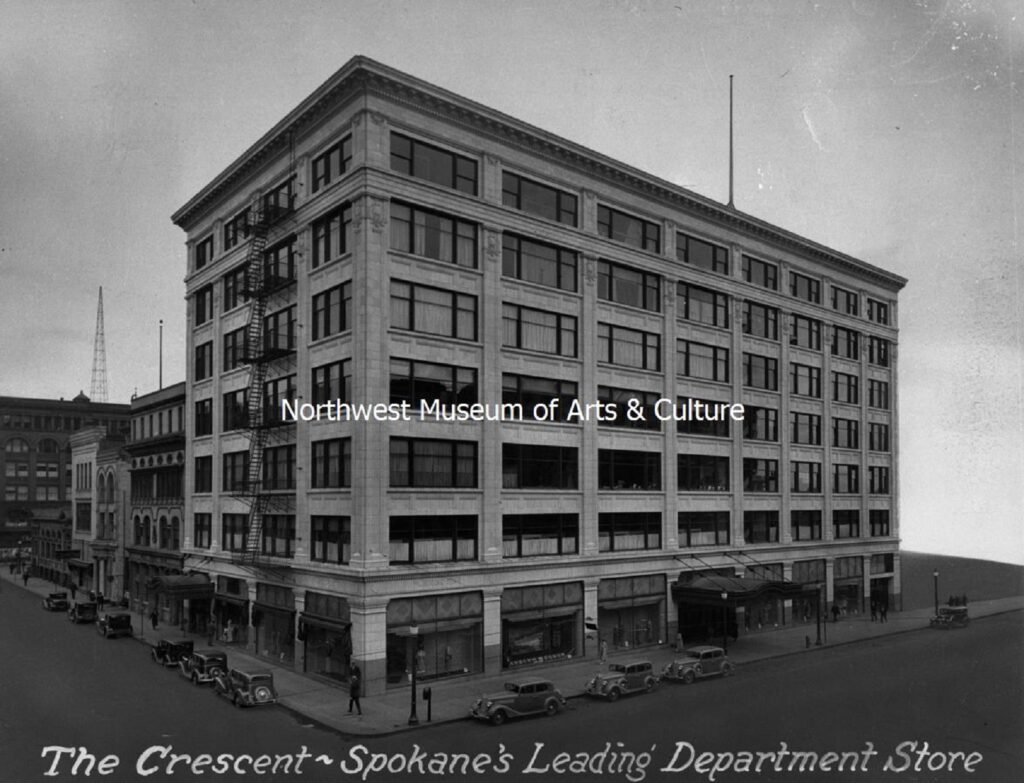
The first outlying Crescent store was built in 1959 at the old Northtown Mall. This was considered Spokane’s first official “shopping center.” With varying products featuring clothing, footwear, hats, bedding, furniture, jewelry, beauty products, house-wares and high-tech-for-the-time equipment, they quickly expanded. A second location for The Crescent was constructed in Spokane Valley’s University City shopping center in 1969.
The Crescent chain then changed hands and became a subsidiary of Marshall Field & Company, out of Chicago, after purchase in 1962. Marshall Field, an American entrepreneur, started his chain of Chicago-based department stores back in 1852. They were renowned for their exceptional quality, care and customer service. At that time, Marshall Field & Company owned Seattle’s Frederick & Nelson since 1929. In 1987, four of the six Frederick & Nelson locations were sold and promoted under The Crescent brand’s luxurious name. These four stores were later sold to Lamonts in 1988.
After being a subsidiary of Marshall Field & Company, the downtown Spokane Crescent store was purchased by BATUS Retail Group (a former British American Tobacco Company subsidiary) in 1982, along with Marshall Field’s parent company. BATUS renamed all the stores in the Seattle Washington division to Frederick & Nelson in 1988. BATUS again sold The Crescent brand along with Frederick & Nelson in 1986. They stayed open only briefly and dissolved in 1992 when Frederick & Nelson eventually filed for bankruptcy and liquidated. In 1998, the flagship Frederick & Nelson store in Seattle became the first of many Nordstrom stores.
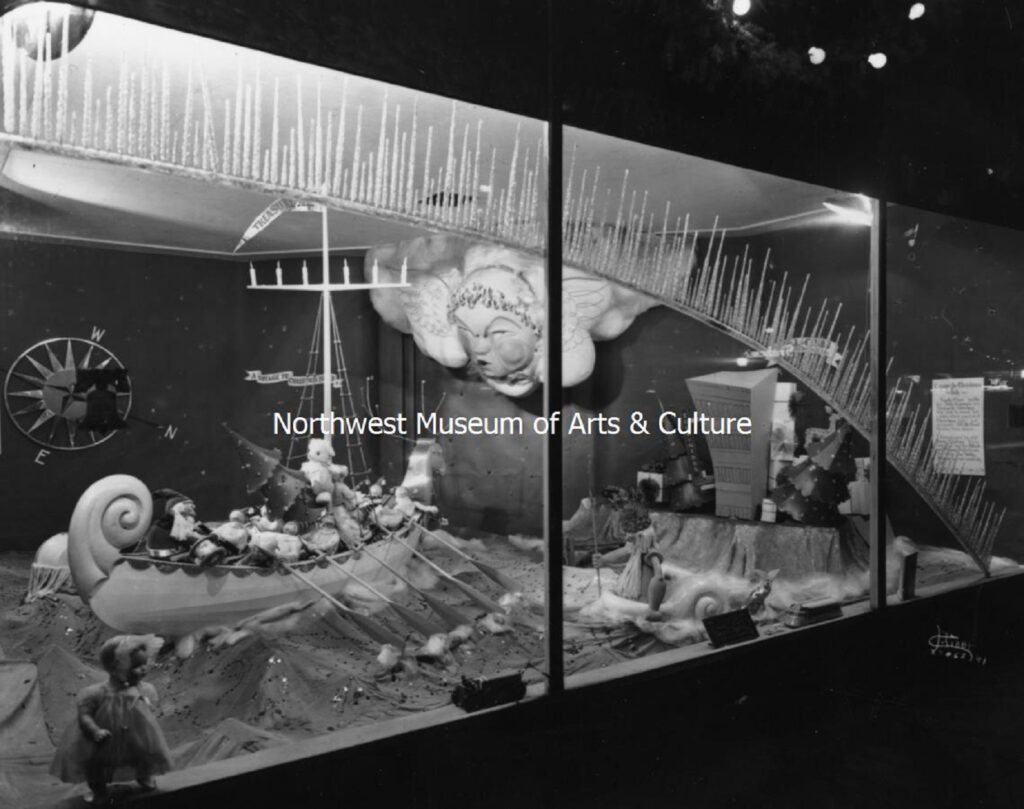
Regarding the coat, The Crescent had an area of the store dedicated entirely to fur storage. Here, people could check in their fur coats, garments, rugs, and woolens for safe storage and preservation during the off-season. Clipped from The Spokesman-Review, this was “the first cold-storage to be built in the state and the second in the northwest, the other being in Portland… the plant involve[d] a special ventilating system providing a constant circulation of cold air at a temperature of 32 degrees… which best preserve[d] the natural luster and softness of fine furs.” A Spokane local, Shelly Toone, chimed in, “My Grandmother had three of these coats.”
Many Spokane locals previously worked in the fur storage department of The Crescent, “My friend, who worked in the fur department… would be busiest in May taking in coats for cold-storage over the summer. [They were] busy again in October when the ladies came back for them,” preparing for the winter, said Laurie Jackson. “I worked there in the 80s,” said Jason Hayes, “and got a tour of the fur storage by one of the buyers. Furs unclaimed from the 30s, 40s, and 50s [were left] just waiting for their owners…fascinating stuff.”












